Sewing a zipper is a fundamental skill that opens up a world of possibilities in the realm of garment construction and crafting. Zippers not only serve a functional purpose but can also enhance the aesthetics of your projects.
In this comprehensive guide, we will unravel How to Sew a Zipper step by step. From selecting the right zipper type to preparing your fabric, aligning, and securing the zipper, we will cover every aspect of this valuable skill.
Whether you’re adding zippers to clothing, accessories, or home decor items, this guide will empower you with the knowledge and techniques needed to tackle any zipper application with confidence.
So, whether you’re gearing up to add a zipper to a dress, a cushion cover, or a tote bag, let’s embark on this sewing journey together, ensuring your projects are not only functional but also impeccably crafted.
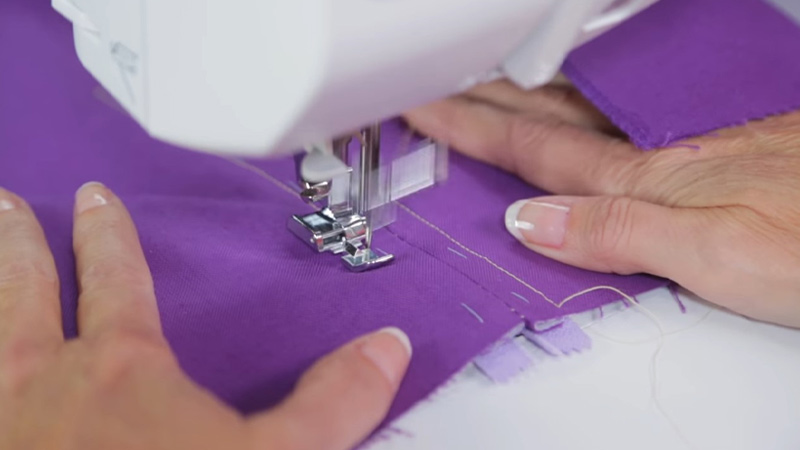
How to Sew a Zipper?
Sewing a zipper is a useful skill that can help you make or repair various garments and accessories, such as skirts, pants, bags, and pillows.
Sewing a zipper may seem intimidating at first, but it is actually quite easy once you know the basic steps and tips.
Here are some simple steps to sew a zipper:
Choose A Zipper And A Zipper Foot

The first step is to choose a zipper that matches the length, color, and style of your project. You can use different types of zippers, such as metal, plastic, or invisible zippers, depending on your preference and purpose.
You also need to choose a zipper foot for your sewing machine, which is a special attachment that allows you to sew close to the zipper teeth without getting stuck.
Prepare The Fabric And The Zipper
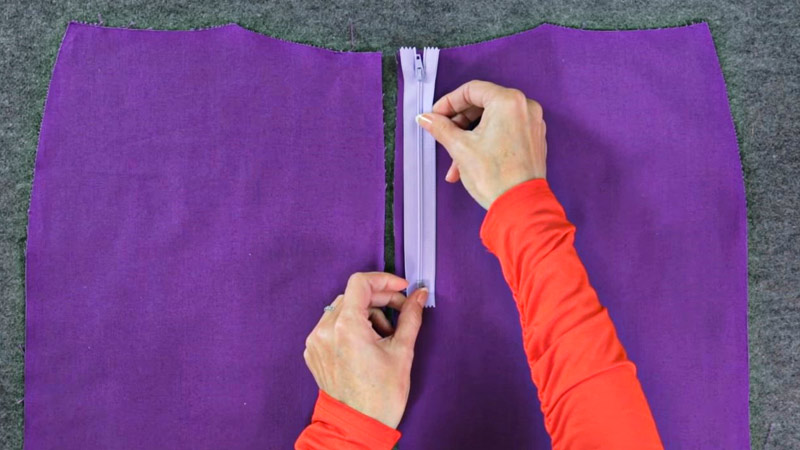
The next step is to prepare the fabric and the zipper for sewing. You need to mark and sew the seam where you want to insert the zipper, leaving an opening that matches the length of the zipper.
You also need to press the seam allowances open with an iron and unzip the zipper completely.
Pin One Side Of The Zipper To The Fabric
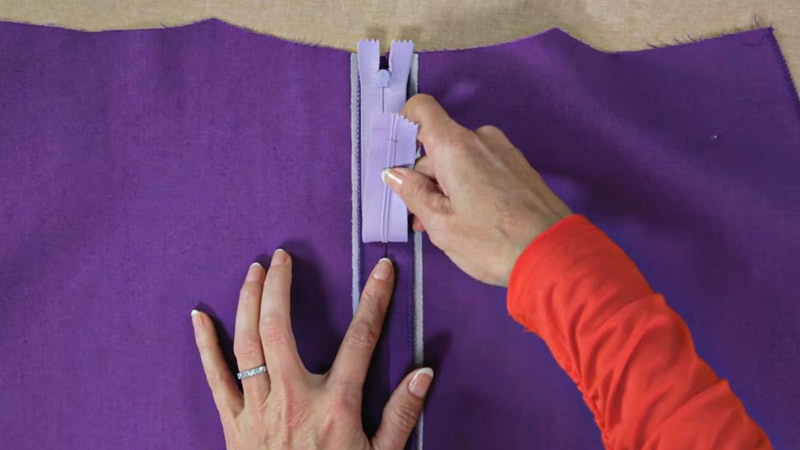
The third step is to pin one side of the zipper to the fabric, aligning the teeth with the seam line and the top stopper with the top edge of the fabric.
You need to pin the zipper face down on the right side of the fabric, making sure that it is centered and straight. You can use pins or clips to secure the zipper in place.
Sew One Side Of The Zipper To The Fabric
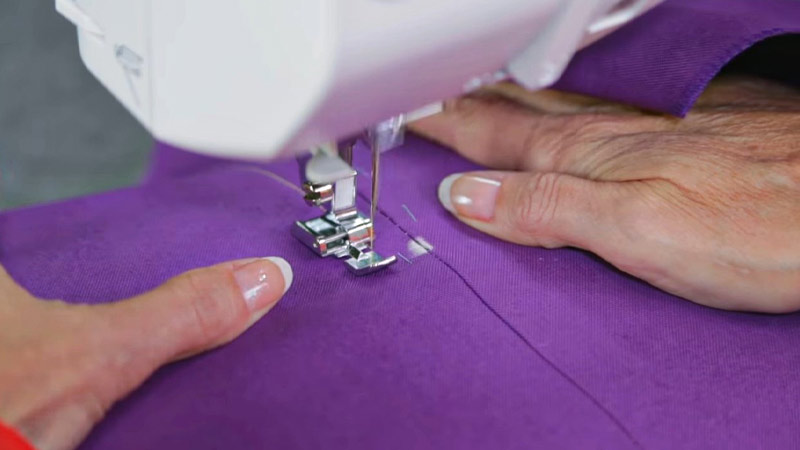
The fourth step is to sew one side of the zipper to the fabric, using a straight stitch and a zipper foot on your sewing machine.
You need to start from the top of the zipper and sew along the edge of the zipper tape, as close as possible to the teeth without catching them.
You also need to backstitch at the beginning and end of your stitching to secure it.
Pin And Sew The Other Side Of The Zipper To The Fabric
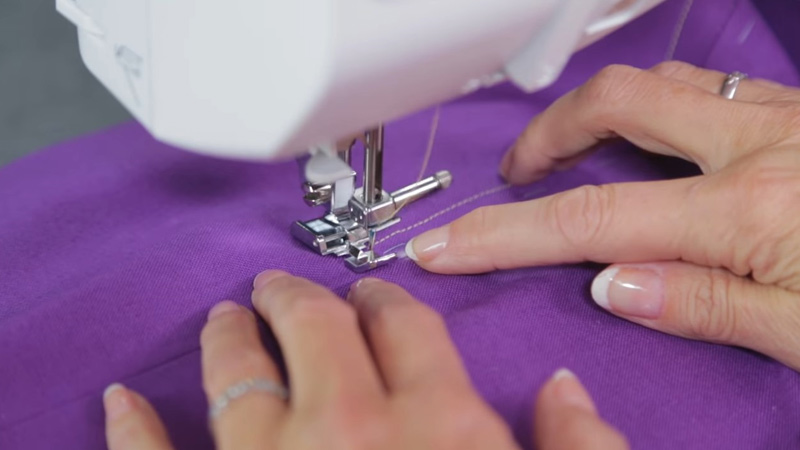
The fifth step is to pin and sew the other side of the zipper to the fabric, following the same steps as before.
You need to zip up the zipper halfway and pin it face down on the other side of the fabric, aligning it with the seam line and edge.
Then, you need to unzip it completely and sew it along the edge of the zipper tape with a straight stitch and a zipper foot.
Sew Across The Bottom Of The Zipper
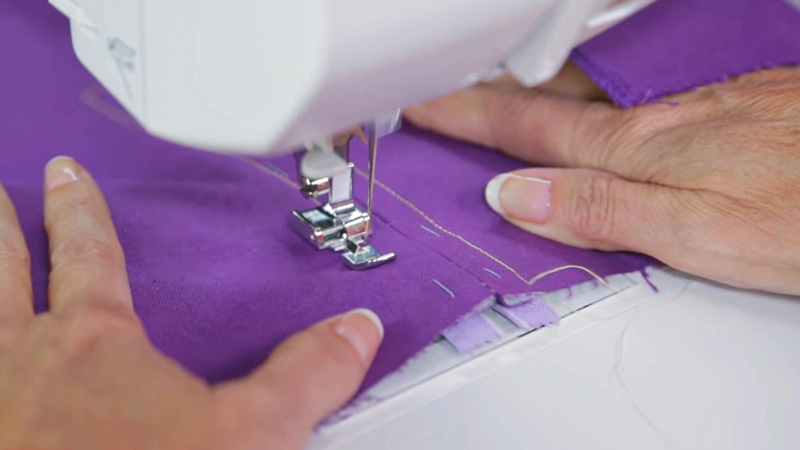
The sixth step is to sew across the bottom of the zipper, using a straight stitch and a regular presser foot on your sewing machine. You need to zip up the zipper completely and fold it flat on one side of the fabric.
Then, you need to sew across the bottom end of the zipper tape, perpendicular to the seam line, making sure that you catch both sides of the tape in your stitching.
Finish And Press Your Project
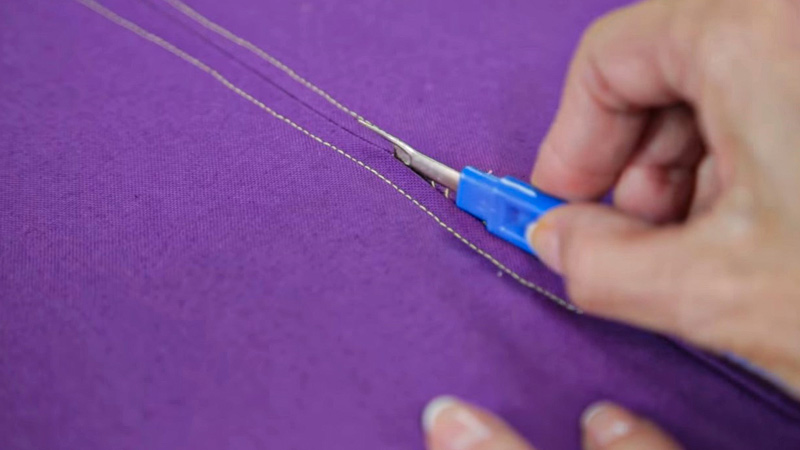
The final step is to finish and press your project using scissors or a seam ripper and an iron. You need to trim off any excess threads or fabric from your stitching and open up the seam where you inserted the zipper with a seam ripper or scissors.
Then, you need to press your project with an iron, making sure that your zipper lies flat and smooth on your fabric.
What Kind of Zipper Should I Use to Sew a Zipper?
There are many kinds of zippers that you can use to sew a zipper, depending on the type of project, fabric, and style that you are working on.
Here are some kinds of zippers that you can use to sew a zipper:
Invisible Zippers
Invisible zippers are zippers that have very fine teeth that are hidden under fabric tape. They are usually sewn into the seam of a garment, such as a skirt or a dress, and create a seamless and smooth appearance.
They are ideal for delicate or lightweight fabrics and for garments that have a fitted or elegant style.
Metal Zippers
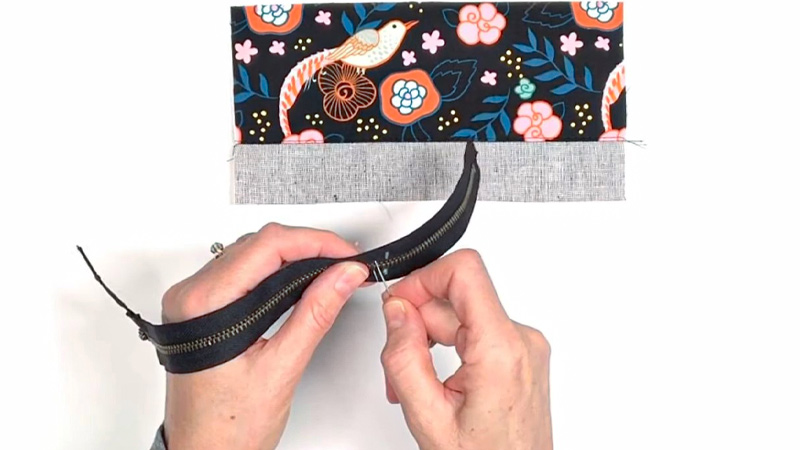
Metal zippers are zippers that have metal teeth that are attached to a fabric tape. They are usually sewn onto the fabric rather than into the seam and create a visible and sturdy closure.
They are ideal for heavy or thick fabrics and for garments that have a rugged or industrial style, such as jeans, leather jackets, or coats.
Plastic Zippers
Plastic zippers are zippers that have plastic teeth that are molded onto a fabric tape. They are similar to metal zippers, but they are lighter and more flexible.
They can be sewn onto the fabric or into the seam and create a durable and versatile closure.
They are ideal for medium or synthetic fabrics and for garments that have a casual or sporty style, such as sweaters, hoodies, or bags.
Coil Zippers
Coil zippers are zippers that have nylon or polyester coils that are sewn onto fabric tape. They are also known as spiral zippers, and they are the most common type of zipper.
They can be sewn onto the fabric or into the seam and create a smooth and reliable closure.
They are ideal for any type of fabric and for garments that have a simple or classic style, such as jackets, pants, or pillows.
Separating Zippers
Separating zippers are zippers that have two sliders that can separate the zipper into two parts. They have a box and pin mechanism at the bottom that can lock or unlock the zipper.
They are usually sewn into the seam of a garment, such as a jacket or a coat, and create an easy and functional opening.
They are ideal for garments that need to be fully opened or closed, such as outdoor clothing or construction clothing.
Two-Way Zippers
Two-way zippers are zippers that have two sliders that can move in opposite directions along the zipper chain. They can be either separating or non-separating zippers, depending on the type of project.
They are usually sewn into the seam of a garment, such as a piece of luggage or a sleeping bag, and create an adjustable and convenient closure.
They are ideal for garments that need to be opened or closed from both ends, such as long coats or dresses.
Water-Repellent Zippers
Water-repellent zippers are zippers that have a special coating or treatment that makes them resistant to water and moisture. They can be any type of zipper, such as metal, plastic, or coil zippers, depending on the type of project.
They are usually sewn onto the fabric or into the seam of a garment, such as a raincoat or a swimsuit, and create a protective and secure closure.
They are ideal for garments that need to be waterproof or water-resistant, such as outdoor clothing or sports equipment.
What Is The Easiest Zipper To Sew?
When it comes to sewing zippers, there are several types to choose from, and some are easier to work with than others.
Here are some of the easiest zippers to sew:
Standard Coil Zipper
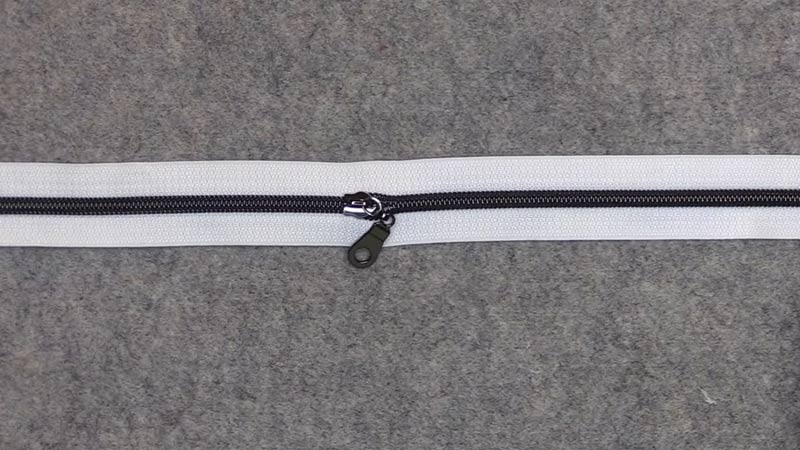
This is the most common type of zipper with a flexible coil of interlocking teeth. It’s easy to sew along the fabric edges and is often used in a variety of garments, bags, and accessories.
Invisible Zipper
Despite its name, an invisible zipper is relatively easy to sew once you get the hang of it. The teeth are concealed behind the fabric, making it appear seamless. It’s often used in dresses and skirts.
Separating Zipper
Separating zippers are commonly used in jackets and hoodies. They’re easy to sew because they separate fully, making it simpler to align the fabric edges.
Plastic Zipper
Plastic zippers are lightweight and easy to sew. They are often used in casual wear, backpacks, and outdoor gear. Their plastic teeth are more forgiving for beginners.
Nylon Coil Zipper
Nylon coil zippers are similar to standard coil zippers but with slightly larger, more visible teeth. They are easy to sew and are often used in sportswear and casual clothing.
Metal Zipper
Metal zippers have metal teeth and are commonly found in jeans and heavy-duty jackets. While they can be a bit more challenging to sew due to the thickness, they are still manageable with some practice.
Cotton Tape Zipper:
Cotton tape zippers have fabric tape instead of plastic or metal. They are straightforward to sew and are often used in lightweight garments and home decor projects.
While these zippers are generally considered easier to sew, it’s important to note that zipper sewing skills improve with practice.
Start with simpler projects to gain confidence, and gradually tackle more complex zipper applications as your sewing skills grow.
FAQ
You’ll need a zipper foot for your sewing machine, fabric pins or clips, a seam ripper for corrections, matching thread, and, of course, the zipper itself.
Consider the purpose, fabric weight, and style of your project. For lightweight fabrics, choose a nylon coil or invisible zipper. For heavy fabrics, opt for a metal or plastic zipper.
Not aligning the zipper properly is a common mistake. Ensure the zipper teeth are centred along the seam, and the fabric edges match before stitching.
Yes, you can sew a zipper by hand using a backstitch or slipstitch. It may take longer, but it’s a viable option if you don’t have access to a sewing machine.
To prevent puckering, iron the fabric before sewing and use a pressing cloth while sewing the zipper. Additionally, avoid stretching the fabric as you sew and ensure your machine is set to the appropriate tension.
Conclusion
As we conclude this guide on sewing zippers, you have unlocked a versatile skill that can elevate your sewing and crafting projects. The ability to sew zippers effectively opens doors to creating tailored garments, stylish accessories, and well-crafted home decor items.
Remember that practice is the key to mastering this skill. Start with simpler projects like pencil cases or throw pillow covers before tackling more complex garments.
With patience and attention to detail, you’ll become proficient in sewing zippers, ensuring that your creations are both functional and aesthetically pleasing.
Whether you’re adding a hidden zipper to a dress, a decorative zipper to a handbag, or a functional zipper to a jacket, the knowledge you’ve gained will serve you well.
Embrace the creative opportunities that zippers offer and continue to refine your sewing skills, knowing that you can confidently sew a zipper into any project that comes your way.
Leave a Reply